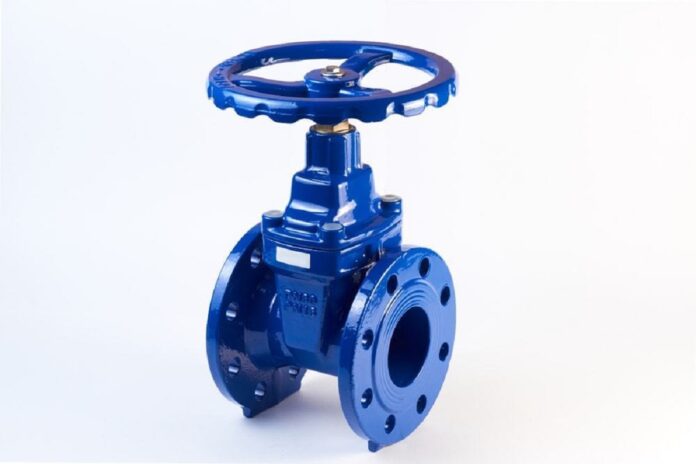A gate valve is a kind of linear motion valve that regulates fluid flow via a pipeline by using a gate or wedge-shaped disc. The valve’s fluid can freely flow through it when the gate is fully open, and it may entirely stop the flow when it is fully closed. These electronic flow control valves use a sliding plate or gate that slides up and down to either allow or stop the passage of fluid or gas in order to control the flow.
Here is some information about gate valves, including a comparison with other types of air flow control valves, a selection guide, and other details. We will go over every detail you require to select and use a gate valve for your project in this extensive tutorial.
What Function Does a Gate Valve Perform?
The flow of fluid or gas within a system is significantly regulated by gate valves. They are frequently employed in sectors including power plants, water treatment, and the oil and gas industry. An electronic flow control valves function is to allow full fluid flow when it is open and complete shut-off when it is closed.
Gate Valve Applications
The pneumatic flow control valves are frequently utilised in applications that need maximum flow with a little pressure drop, such as pipelines that transport gas, oil, steam, or water. Moreover, they are utilised in systems that need a tight cutoff, such as isolation valves or emergency shutdown systems. Gate valves are frequently employed in industrial settings, such as water treatment facilities, the oil and gas sector, and the petrochemical sector.
Gate valves are appropriate for a variety of purposes, such as:
Isolation Valves Systems
Gate valves are frequently employed as isolation valves to stop the passage of fluid through a pipeline.
Emergency Shutdown Systems
To swiftly stop the flow of fluid in the case of a safety issue, gate valves are frequently utilised in emergency shutdown systems.
Applications Involving High Pressure
Gate valves are frequently employed in high-pressure applications because they can resist high pressure.
Applications For Low Temperatures
Gate valves are frequently utilised in cryogenic applications because they can function at low temperatures.
Read Also: How to Get Out of Prison After Your Arrest?
Actuating Gate Electronic Flow Control Valves
The devices are controlled by raising or lowering a gate or disc with a wedge shape inside the valve body. The actuator, which might be a motor, gearbox, or hand wheel, is linked to a stem to which the gate is attached. By raising or lowering the gate and regulating the flow of fluid via the valve, the actuator raises or lowers the stem as it is twisted.
The following elements should be taken into account when choosing a gate valve:
Size
To achieve efficient flow and avoid a significant pressure drop, the valve size should match the pipe size.
Pressure Rating
To avoid leaks and guarantee safety, the valve’s pressure rating should be compatible with the operating pressure of the system.
Temperature Rating
To prevent damage to the electronic flow control valves and maintain safety, the temperature rating of the valve should match the operating temperature of the system.
Corrosion
To avoid corrosion and maintain lifespan, the valve’s material must be compatible with the fluid being conveyed.
End Connections
To guarantee correct installation, the valve’s end connections must match the end connections of the pipe.


